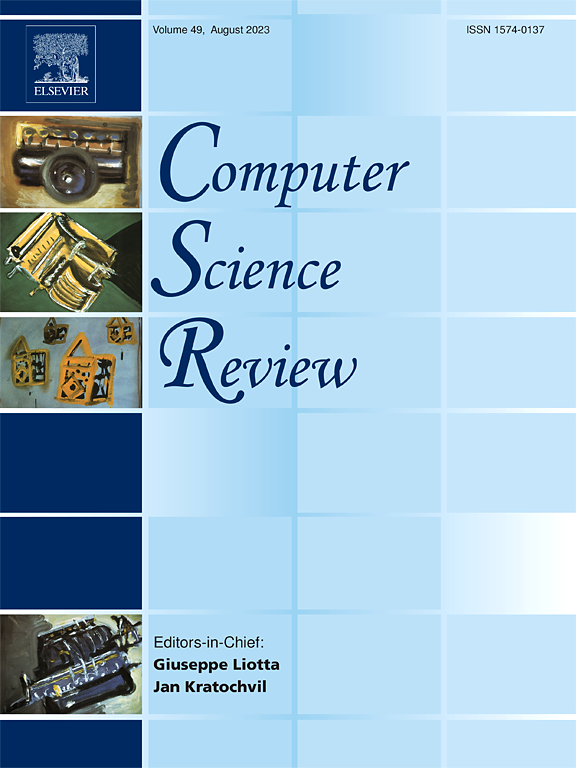Parameterised counting complexity theory
IF 12.7
1区 计算机科学
Q1 COMPUTER SCIENCE, INFORMATION SYSTEMS
引用次数: 0
Abstract
A little more than two decades ago, Flum and Grohe (STOC 02), and McCartin (MFCS 02) introduced the structural foundations of parameterised counting complexity theory with the goal of applying and generalising the extensive toolkit of parameterised algorithmics to the world of counting.
Counting problems are known to be infamously hard with respect to classical complexity theory, much harder than -complete problems under standard assumptions, as shown by Toda (STOC 91). This holds true even for counting problems that admit a tractable decision version, a fact established in Valiant’s seminal work on the complexity of counting perfect matchings (SICOMP 79). Naturally, the central question in parameterised counting complexity theory asks: Can this intractability be alleviated with a multivariate complexity analysis?
We have observed that many tools from the “swiss army knife” of parameterised decision algorithms, such as win–win approaches based on bidimensionality, colour-coding, and, to some extent, kernelisation, often fail in the realm of counting problems (especially for exact counting). Circumventing the inapplicability of well-established algorithmic tools, we have witnessed the development of a flurry of novel techniques and theories tailored to parameterised counting problems, with origins in commutative combinatorial algebra, topology and deep graph theory dating back to early works of Lovász.
In this survey, we will revisit some of the most important frameworks and results discovered and established in the field over the years. Particular focus will be put on the framework of Graph Motif Parameters due to Curticapean, Dell and Marx (STOC 17), one of, if not the most exciting development in parameterised counting since its inception.
We will assume familiarity with basic concepts of parameterised algorithms and complexity theory, but, aside from that, we aim to present the introduction to the world of parameterised counting in a self-contained way.
参数化计数复杂性理论
二十多年前,Flum和Grohe (STOC 02)和McCartin (MFCS 02)介绍了参数化计数复杂性理论的结构基础,目标是将参数化算法的广泛工具包应用和推广到计数世界。正如Toda (STOC 91)所示,就经典复杂性理论而言,计数问题是出了名的困难,比标准假设下的np完全问题要困难得多。这甚至适用于可处理的决策版本的计数问题,这一事实在Valiant关于计算完美匹配的复杂性的开创性工作中得到了证实(SICOMP 79)。自然,参数化计数复杂性理论的核心问题是:这种难处能否通过多元复杂性分析得到缓解?我们已经观察到,来自参数化决策算法的“瑞士军刀”的许多工具,例如基于二维、颜色编码和某种程度上的核化的双赢方法,在计数问题领域经常失败(特别是精确计数)。为了规避已建立的算法工具的不适用性,我们目睹了一系列针对参数化计数问题的新技术和理论的发展,这些技术和理论起源于交换组合代数、拓扑和深度图论,可以追溯到Lovász的早期作品。在本次调查中,我们将回顾多年来在该领域发现和建立的一些最重要的框架和结果。由于Curticapean, Dell和Marx (STOC 17),我们将特别关注图基序参数的框架,这是自参数化计数开始以来最令人兴奋的发展之一。我们将假设熟悉参数化算法和复杂性理论的基本概念,但是,除此之外,我们的目标是以一种自包含的方式介绍参数化计数的世界。
本文章由计算机程序翻译,如有差异,请以英文原文为准。
求助全文
约1分钟内获得全文
求助全文
来源期刊

Computer Science Review
Computer Science-General Computer Science
CiteScore
32.70
自引率
0.00%
发文量
26
审稿时长
51 days
期刊介绍:
Computer Science Review, a publication dedicated to research surveys and expository overviews of open problems in computer science, targets a broad audience within the field seeking comprehensive insights into the latest developments. The journal welcomes articles from various fields as long as their content impacts the advancement of computer science. In particular, articles that review the application of well-known Computer Science methods to other areas are in scope only if these articles advance the fundamental understanding of those methods.
 求助内容:
求助内容: 应助结果提醒方式:
应助结果提醒方式:


